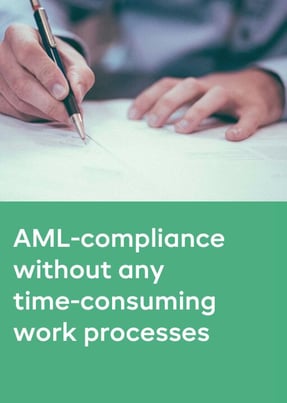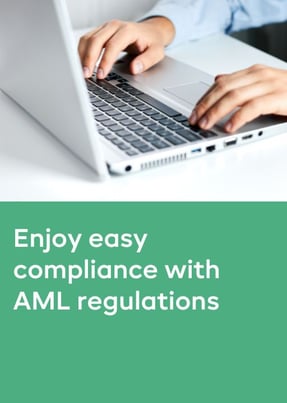- Products
- RegLab for ...
- Knowledge centre
Download the AML glossary >
 Discover the essential AML compliance terminology and gain instant access to a comprehensive guide
Discover the essential AML compliance terminology and gain instant access to a comprehensive guide - The company
Working at RegLab >
Join RegLab as the new Product Owner of our software tool and change the way the legal community approaches anti-money laundering.
There may not be any vacancies that perfectly match your profile, but that does not mean there is no room for someone who can improve RegLab.
- Book a demo
How to implement AML in your firm's culture
A solid AML process depends on the firm's culture. It only works if AML compliance is a given. But how do you make sure AML isn't just a paper obligation, but something that's actually followed in everyday practice?
In practice, we see that many firms encounter the same pitfalls. Policy documents exist, but are not followed. Tasks often lie with support staff who can collect data but cannot assess it. And if partners or management do not promote the importance of compliance, neither will the rest of the firm. This creates uncertainty about responsibilities, reports are not made, and the firm is put at risk.
Even the best software cannot solve this. Only when everyone understands why the rules are there and what role they play will compliance become self-evident.
How to get everyone on board with the AML process
Creating acceptance starts with awareness. Acknowledge that compliance can sometimes be difficult, but also explain why it is necessary. For example, make risks tangible by sharing examples of supervision or sanctions.
This is followed by shared responsibility. Show that AML compliance is not just a job for the compliance department, but for everyone. Convey a positive message: this is how we work and this is how we help ourselves move forward. This only works if the board and management set a good example and visibly support compliance.
The third step is a clear division of tasks. A good AML process is clear and manageable. Everyone knows what step they are responsible for. Who creates a client? Who assesses the documents? Who ultimately gives approval? The professional with final responsibility maintains control.
Dealing with resistance
New processes or software, such as RegLab, can initially cause friction. Employees may perceive it as extra work or lack clarity about their role. Showing understanding helps a lot, but clear guidelines are just as important.
Prevent resistance by introducing the process carefully:
- Explain why the tool or new process is necessary and what problem it solves.
- Show how the new process reduces errors and saves time.
- Provide training and guidance so that everyone knows what is expected of them.
Compliance with AML is not optional, but you can make the way you comply as manageable as possible. Emphasise the positive aspects of a new process or tooling. Digitisation and a user-friendly tool such as RegLab make the process easier, faster and less prone to errors. This takes a large part of the work off your hands. In this way, AML is not only complied with, but also made manageable.
Keep AML a topic of discussion
You cannot change culture with a single policy document. Keep the subject fresh with quarterly updates and practical examples. But also make the subject interactive, for example with an annual live training session instead of a digital obligation.
In addition, appoint one AML officer who monitors changes within AML and sanctions and communicates these internally. This keeps AML on the agenda and makes it part of the corporate culture. It also creates greater awareness and understanding.
How to know if it works
Finally, monitor compliance on a structural basis. Internal inspections, audits, or periodic check-ins will quickly reveal whether processes are being followed correctly. This allows you to make timely adjustments and prevent compliance from remaining a paper reality.
Themed file: fully prepared for the supervisor’s audit
This article is part of a number of articles and downloads that will help you prepare yourself for the supervisor’s visit. Do you want to be 100% AML-proof and ready for the supervisor’s visit? Find all FAQs in our Knowledge Centre.
AML compliance as a service
Need guidance with internal processes? Want to make AML compliance structural and manageable? Or would you like to receive some advice? Our compliance specialists can help you immediately.





